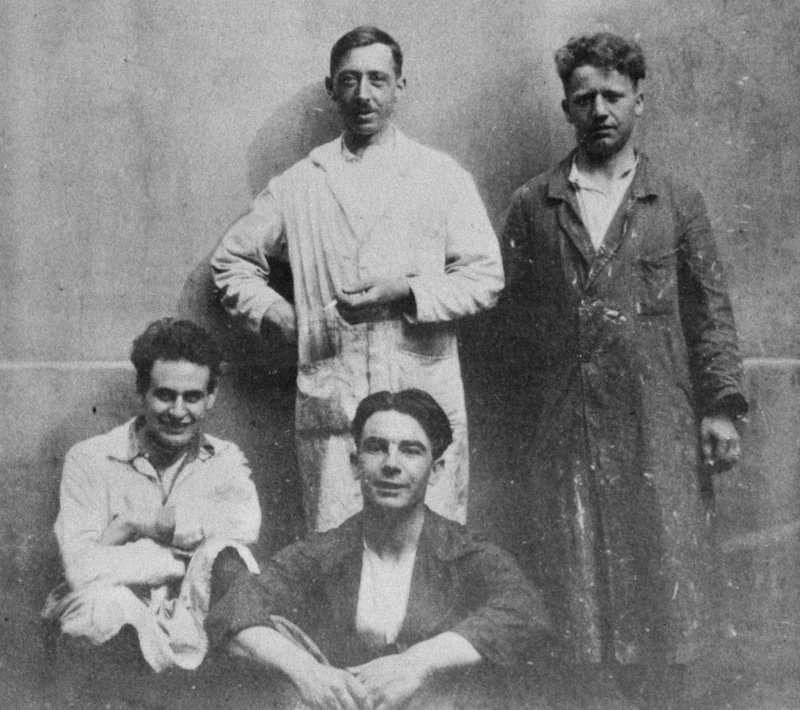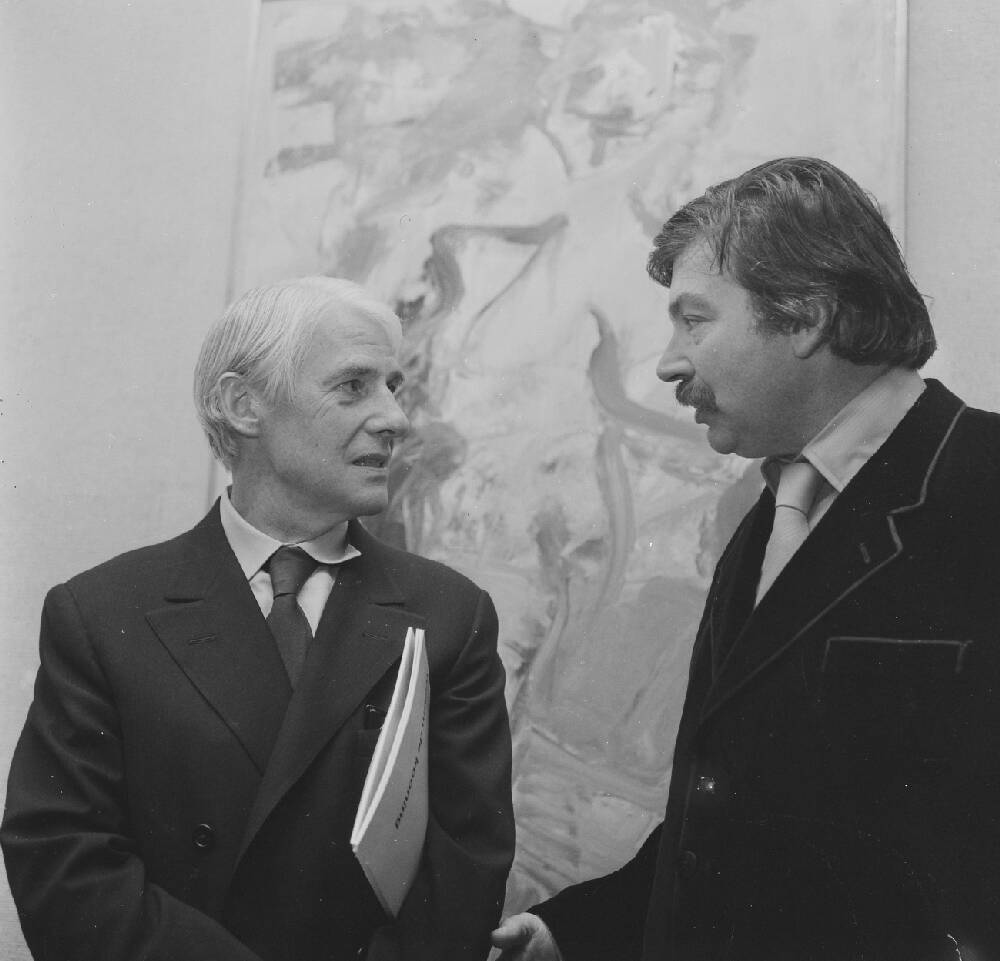de Kooning Chronology
1904 April 24, Willem de Kooning is born in Port of Rotterdam, Holland, to Leendert de Kooning (b. February 10, 1876) and Cornelia Nobel de Kooning (b. March 3, 1877). He has one older sister, Marie (b. 1899). (His mother later gives birth to three more daughters, none of whom live past one year.)
1909 Parents divorce; court awards custody of five-year-old Willem to his father. His mother, however, kidnaps Willem and is later awarded full custody.
1916-1920 Begins training in commercial art under Jan and Jaap Giding, proprietors of a large commercial art firm, with whom he resides. Enrolls in the Academie voor Beeldende Kunsten en Technische Wetenschappen in Brussels, Belgium, attending night classes until 1924, when he graduates with certifications in both carpentry and art.
1920 Leaves the Giddings to begin training with Bernard Romein, noted art director of a large department store in Rotterdam.
1916 Completes grammar school.
1920 Leaves the Giddings to begin training with Bernard Romein, noted art director of a large department store in Rotterdam.
1924-1926 Travels to Antwerp and enrolls in the Van Schelling School of Design, commuting to Brussels to study simultaneously at the Académie Royale des Beaux-Arts, supporting himself with commercial work.
1926 Immigrates to United States as a stow-away on the SS Shelly, arriving in Newport News, Virginia on July 30. Takes ship to Boston, Massachusetts, then travels by train to Rhode Island. Settles in Hoboken, New Jersey, and finds lodging at the Dutch Seaman’s Home. Becomes acquainted with other artists and moves to New York City. Works as commercial artist and as a sign-painter, window dresser, and carpenter.
1927 Moves to Manhattan and begins working for Eastman Brothers, a design firm. Meets Misha Reznikoff, who is later instrumental in securing his 1948 summer teaching job at Black Mountain College.
1928 Spends the summer at the artists’ colony in Woodstock, New York.
1929 Becomes associated with modern artists John Graham and Stuart Davis. Buys Capehart hi-fi sound system, spending nearly six months’ salary. Frequents George’s in the Village and the Savoy Ballroom in Harlem with David Margoli and other artists.
1929 Becomes associated with modern artists John Graham and Stuart Davis. Buys Capehart hi-fi sound system, spending nearly six months’ salary. Frequents George’s in the Village and the Savoy Ballroom in Harlem with David Margoli and other artists.
1930 Meets David Smith and Arshile Gorky. Moves into studio apartment with Gorky. Works as a window dresser for A.S. Beck, a chain of shoe stores in New York. Meets Virginia “Nini” Diaz, with whom he goes to Woodstock, New York. in late May. Moves to 348 W. 55th Street with Diaz in the autumn; Diaz’s mother moves in. Diaz has first of three abortions, the last in 1935, which leaves her unable to conceive.
1932 Moves to Greenwich Village with Diaz.
1934 Joins Artist’s Union, which leads to attending John Reed Club (a pro- Communist group) meetings, despite his anti-Commuist leanings. Meets Julie Browner in May and begins relationship; Diaz moves out. Returns to Woodstock and rents home with Browner for the summer. Invites Diaz to join them, which she does, resulting in a ménage à trois. Invites Marie Marchowski and her friend to join them; they also move in. Returns to New York City, live at 40 Union Square, a home owned by friend and architect Mac Vogel. Browning returns from Woodstock; she and de Kooning move to 145 West 21st Street, then to 145 West 23rd Street.
1935 Meets Rudy Burckhardt and Edwin Denby, who become first collectors of de Kooning’s work. Begins full-time employment with the mural division of the Works Progress Administration’s Federal Art Project, one of which is the Williamsburg Federal Housing Project in Brooklyn. Makes pivotal decision to devote his life to art, inspired by WPA director Burgoyne Diller. Leaves A.S. Beck to pursue art full time. Meets art critic, Harold Rosenberg. His mother comes to visit.
1936 Moves with Browner to commercially-zoned 156 West 22nd Street. Meets artist Mark Rothko. Unfinished work for the Williamsburg mural is included in group exhibition New Horizons in American Art at the Museum of Modern Art in Manhattan, September 14-October 12; this is his first public recognition in America. Declines participation in the American Abstract Artists group.
1937 System and Dialectics of Art, by John Graham, is published, naming de Kooning one of eight painters he considered “outstanding.” Arshile Gorky paints Portrait of Master Bill, a painting of de Kooning. Resigns from the WPA in August when “American citizens only” policy is announced, effective post-July. Begins work on a mural, Medicine, for the World’s Fair on the Hall of Pharmacy building; work on this continues until early 1939.
1938 Browner moves in with Diaz. Meets Elaine Marie Fried, a fellow artist and teacher. Paints a series of male figures, including Two Men Standing, A Man, and Seated Figure. Begins abstractions Pink Landscape and Elegy.
1939 Becomes influenced by the Surrealist style of Gorky and Picasso and the Gestural style of Jackson Pollock and Franz Kline. Suffers financially; tutors local art students. Becomes engaged to Fried. Visits Balcomb Greene in Fishkill. With other artists, petitions the Museum of Modern Art to show the work of Earl Kerkam after his death.



